I’m not a fly tier. I’m a fly flinger. You create it and I’ll cast it. Even if it’s purple. I’m not picky, but I am ancy. I know the ice is off the river, but snow it still on the banks and because I don’t tie, I don’t have a winter timewaster. I resort to staring out the window at my buried boat. I’ve owned my drift boat for seven months. It’s been covered in snow for five of those months. A quick, March thaw is causing the white to recede rapidly and I can see my boat in my backyard again. It belongs on the water. So do I. The thaw is raising my river addiction and I’m pondering the connection between summer fish and winter flakes.
I call my local fly shop for outrageous fish tales that intrigue me now, but that I’ll be blowing off as bogus by July. I also call fellow fishers and guides with new season energy that’s similar to a schoolgirl on the first day of class. They seem to be on the phone a lot right now too.
“We have a lot of out-of-state-people calling about snow conditions,” says Todd Lanning, Henry’s Fork Anglers assistant manager. “They don’t know how to get a hold of the water people, but they know how to find us. I tell them this is an instant trout fishery. Just add water.”
Next I bug my biologist buddies. I’m on the phone with them often. They are the scientific smarts behind my stories, but they don’t know how to talk to common folk like us fishers. Translating their insight is my job. I want to know what snowflakes mean in scientific terms.
“Well it depends. It’s a complicated process,” says Dan Garren, Idaho Department of Fish and Game regional fisheries manager. “In short, when you have good water years, it’s good for fish in regulated systems because it’s easier to fill reservoirs and hold over water for following years.”
Garren and I like to hedge bets on when Yellowstone cutthroat trout will run. Historically, natural spring runoff was the starting gun, but now man-made dams regulate the Snake River. Between flood control, irrigation demand and hydropower interest, the spring surge is determined by everything but runoff. When that surge does hit the main channel, cutties make a run up smaller tributaries. They stream spawn until the checkered flag drops in early July then they return to the main and it’s fish on for us. That’s a glorious day, but that day is months away so I must work with what I have now and that’s white. I stay on the phone with Garren trying to translate why flakes matter beyond insulating the boat in my backyard for five months of below freezing weather.
“Still seeing white is certainly a good indication we’ve had a lot of snow,” Garren says. “It’s great if we see snow in the mountains into April, May and even into June.”
Fortunately, my home water won’t be sweating it this season. April is the cutoff for Idaho’s annual precipitation models and we are holding high. Idaho Department of Water Resources knows that by measuring snowpack, or rather snow water equivalency, which is the amount of water held in snowpack over the winter. Too complicated? Scratch scientific and go with simple. Think of snowpack this way:
80% of normal is not good for fish.
100% of normal is good for fish.
120% of normal is really good for fish.
The eastern side of Idaho, blue-ribbon trout country, currently ranges from 88% to 101% of normal. Other parts of the state are pushing 120%. Potential water wars due to drought just might be diverted this year.

So, how does this year’s snowpack stack up around your favorite fishing hole? If you’re in the West, go with the wetter, the better. For everybody and for everything. Low water years turn farmers and fisherman against each other and those years are not pretty. High water years, on the other hand, are splendid. They are splendid the year of and in the years to come. Spawning success is higher in healthy water years so three to five years after that, thank the water gods for increased creel counts.
Put that way, my drift boat can stay buried for a few more weeks if it means my waterway will benefit all that much more when I finally get my first float on.





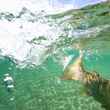






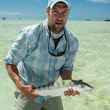



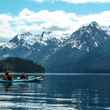




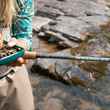
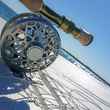






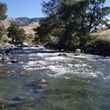
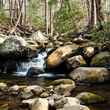
Comments